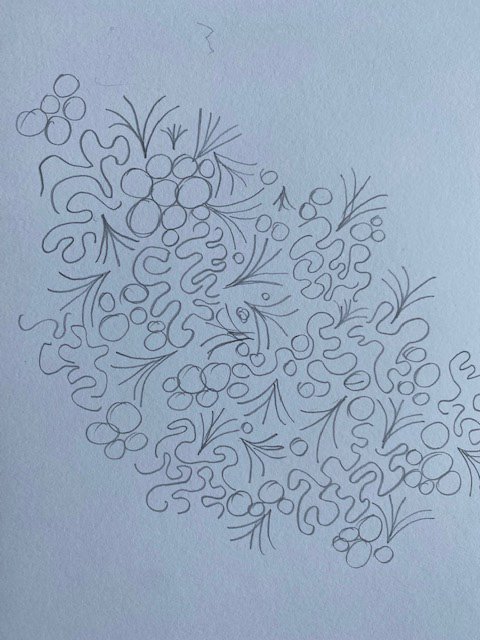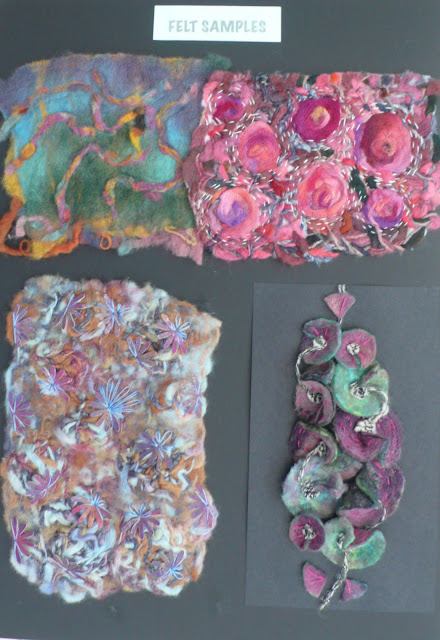For my third presentation piece, I am working on a 2-dimensional design. Within the design I hope to create a 3-dimensional effect by using colour and light to show perspective. My initial idea is to create a view from the seabed looking up towards the surface of the sea, looking through rock formations.
 |
| 191 |
I have used the slip shapes as stencils to start the design, using a small stencil at the top centre of the drawing to denote distance, gradually changing to a large stencil to depict foreground.
 |
| 192 |
I have added shading, lighter shading to show distance, darker colours to show foreground.
 |
| 193 |
A variation on the first drawing.
 |
| 194 |
Looking at possible colour ranges in gouache.
Bottom row - I have mixed Naples Yellow with white on the far left, graduating through to Cerulean Blue with black in the centre.
 |
| 195 |
A colour chart to take a closer look at shading.
 |
| 196 |
Colour shading applied to the design. There are not enough shades here to clearly depict a third dimension.
 |
| 197 |
I decided that the 'breaks' in the foreground were not very effective, so painted over them.
 |
| 198 |
I applied a digital effect over the painting (Fresco), which has enhanced the design and has helped to develop the foreground.
 |
| 199 |
Another digital effect (Glowing Edges). Here the background and foreground are not very distinguishable, but I love the drama that has been recreated.
 |
| 200 |
Looking back to a design I created in Chapter 4, I have coloured Yupo paper with alcohol inks to create the background (the surface of the sea, in the distance).
 |
| 201 |
I cut out the shape from the centre of the design onto black felt and cut small pieces of polyester organza in various colours.
 |
| 202 |
Using a soldering iron, I lightly marked them down onto the felt and cut round to reveal the shape.
 |
| 203 |
I marked the organza down with firm marks to create a pattern on the organza and lightly glued the Yupo design underneath.
 |
| 204 |
I have added strong pink stitches to represent light streaming through the water from the surface above. The other stitches are purely experimental at this stage, just to see how well the colours marry with the background.
 |
| 205 |
In this sample, I have gone back to my original colours and have tried to blend the colours to create a gradual colour change from blue/black to pale yellow. The markings in the lower part are much bolder so that it appears that the lower part of the sample is the foreground and the paler top section, with lighter marks recedes to the distance. I also spaced the markings further apart in the lower section and closer together in the upper section to try and create the illusion of distance.


























































